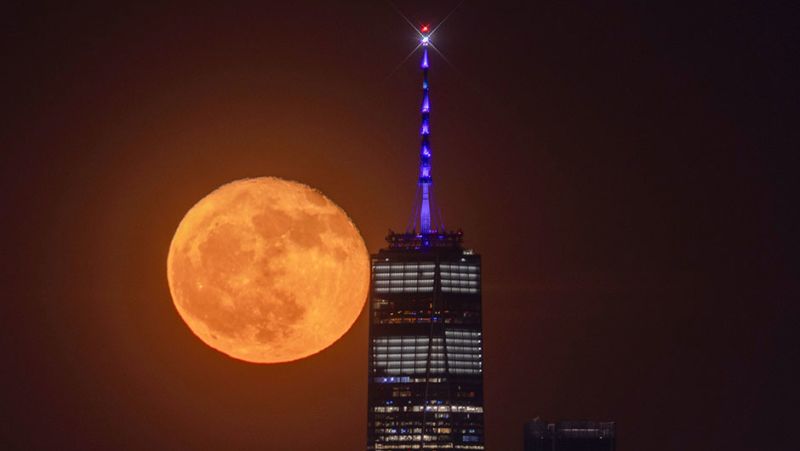The cosmos never ceases to amaze us, and one such celestial event is the full moon in May, affectionately known as the “flower moon.” Its name signifies the seasonal bloom of flowers that marks spring in many parts of the world. This year, the flower moon shines brightly on Sunday night, providing a spectacular view to those fortunate enough to gaze upwards. Despite being a “micromoon,” where the moon is at its farthest point from Earth, it still promises to illuminate the night sky and captivate viewers.
The full moon officially peaks at 12:56 p.m. ET on Monday, but for stargazers, it will appear fully formed on both Sunday and Monday evenings, as shared by EarthSky. On Monday night, the moon will rise low in the southeast just after sunset and will continue its ascent, reaching its zenith in the sky post-midnight. This upward trajectory makes for excellent viewing opportunities, especially for photography enthusiasts keen on capturing the moon’s beauty.
May’s full moon holds the distinction of being the third and final micromoon of 2025. This particular phenomenon arises when Earth’s natural satellite is at its maximum distance, resulting in a smaller appearance compared to a typical full moon. To put this into perspective, the moon will be situated approximately 251,939 miles (or 405,456 kilometers) away from Earth—distances considerably greater than the average separation of about 238,855 miles (384,400 kilometers). NASA provides precise measurements to help us better appreciate our significant distance from this celestial body.
The nomenclature of “flower moon” isn’t just a random choice; it has historical roots stemming from Indigenous cultures. The term itself originates from the Comanche language, although various indigenous tribes have their unique names for the moon in May. For instance, the Creek and Choctaw people refer to it as the mulberry moon, while the Cree call it the frog moon. Other tribes such as the Anishnaabe and Apache offer names that reflect the growth of nature, like the blossom moon and the time when leaves are green, respectively. This diversity in naming highlights the different cultural connections to seasonal changes and nature.
As we move beyond May’s final micromoon, there are still seven more full moons on the horizon for this year, with several promising supermoons approaching as the year progresses. According to the Farmers’ Almanac, remaining full moons for 2025 include significant names such as the Strawberry Moon on June 11 and the Buck Moon on July 10. Other noteworthy moons include the Sturgeon Moon on August 9, the Corn Moon on September 7, the Harvest Moon on October 6, the Beaver Moon on November 5, and finally, the Cold Moon on December 4. Each of these moons brings with it a sense of time and tradition, as they have been celebrated in various cultures throughout history.
In addition to the full moon events, astronomy enthusiasts can also look forward to several noteworthy eclipse occurrences in 2025. In the lead-up to the fall season, two significant solar and lunar eclipses are set to grace the skies. Most notably, a total lunar eclipse will provide an incredible viewing opportunity from regions like Europe, Africa, Asia, Australia, and parts of South America on September 7 and 8. As the Earth passes between the sun and the moon, the celestial alignment will cast a shadow on the moon, causing it to dim or darken.
When the moon finds itself within the darkest part of Earth’s shadow, known as the umbra, it often takes on a reddish hue. This striking visual led to the popular moniker “blood moon,” adding an air of mystique to lunar eclipses and making them particularly memorable experiences for those who catch a glimpse. On September 21, a partial solar eclipse will also take place, where, due to a misalignment, the moon will partially block the sun’s face. This event will be visible from more remote locales, providing a unique celestial spectacle for fortunate observers in Australia, Antarctica, and the Pacific Ocean.
Astrological events such as these emphasize the profound beauty and complexity of the universe. Whether celebrating the traditional names of each moon or marveling at the rare occurrence of eclipses, it is evident that the celestial canvas above continues to inspire wonder and curiosity about our place in the cosmos.



